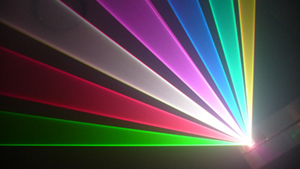Guys, just to clarify: The problem is *NOT* with the FB3. It's with laser manufacturers that don't follow the ILDA spec for high impedance inputs on the modulation inputs for their laser driver modules.
You will experience this same problem on *numerous* controllers if you happen to have one of these drivers that has a low input impedance.
I sent a PM to Rfort because it appeared that this thread was devolving into a urinary olympics, and the real message (that you need to measure the voltage with an Oscilloscope) was getting lost in the clutter. As I suspected, he did not catch this information when it was posted earlier.
The bottom line is that people are *way* to quick to blame the controller, be it Pangolin or another brand. As I said above, this low impedance problem affects NUMEROUS drivers, including Laserwave. Well, that's not really fair, since LaserWave has since changed their design to solve the problem. But last year, it was a problem even for them.
More to the point, Pangolin performed an extensive research project on laser diode drivers back in the summer of 2008 (this is the project that Francesco Loon was working on for them while he was here in the States), and they found several other problems with the drivers they tested. Hayden's post above enumerates most of the common problems rather well, but not many people seemed to be listening to him.
As for a list of drivers, the problem is that they're inconsistent, even among drivers from the same manufacturer. So a list isn't very useful. If you have this problem, a quick solution is to use an op-amp as a unity-gain buffer on the color input. I've posted a schematic in the gallery that shows you how to hook this up. It's incredibly simple, and shouldn't take you longer than a minute or two to hook up.
Here's the link: (The circuit uses a TL-082 op-amp.)
Adam




 Reply With Quote
Reply With Quote
 buffo
buffo



